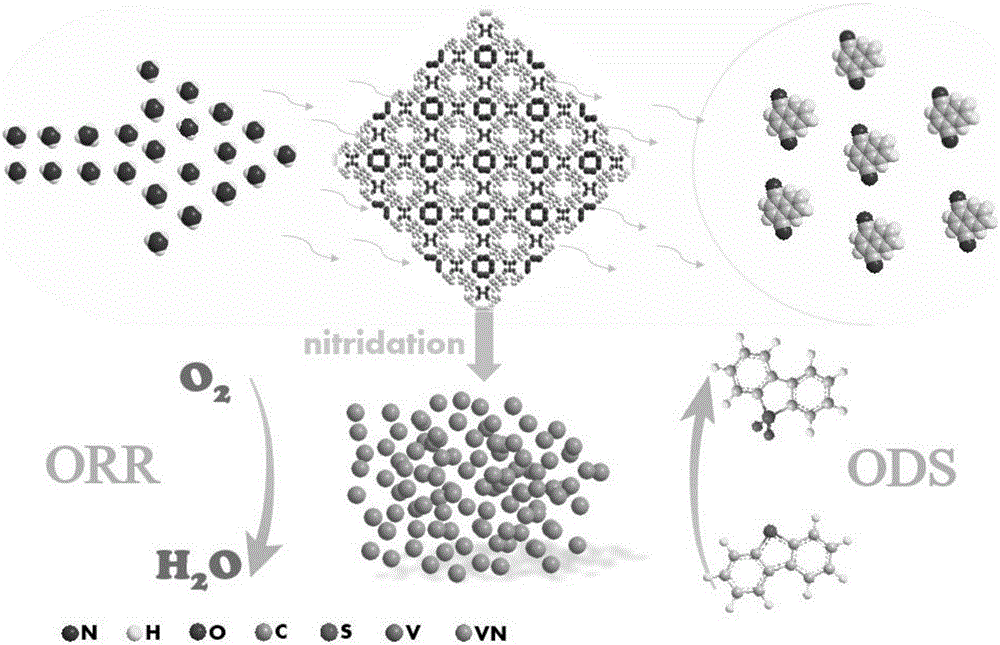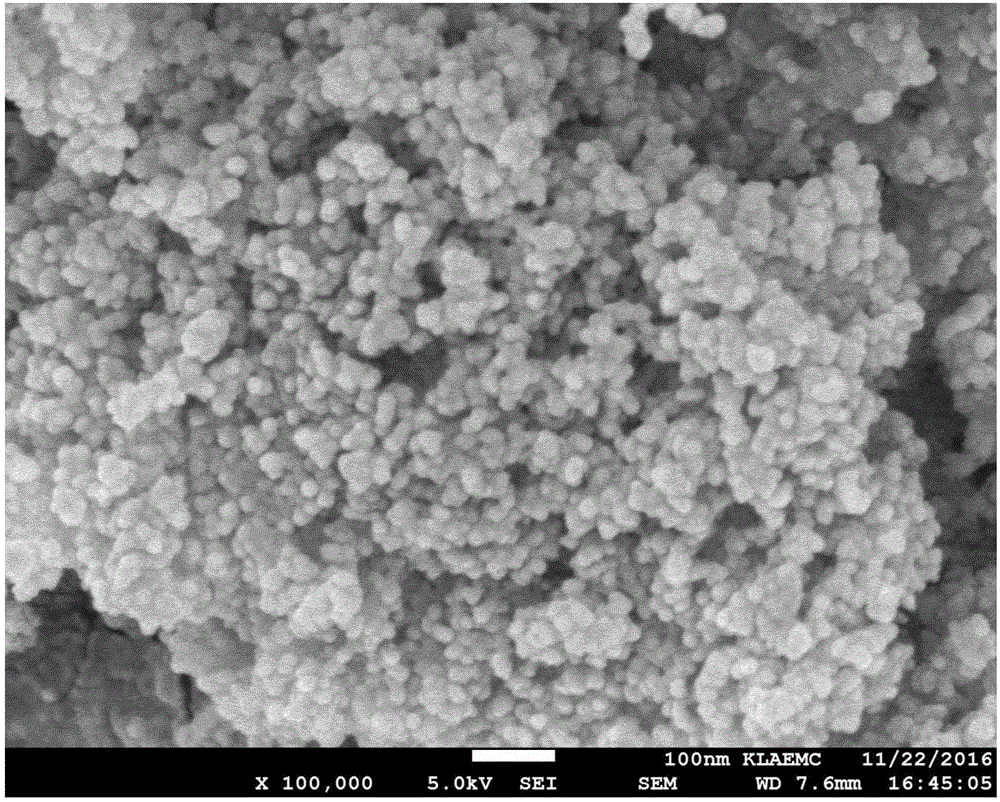Method of synchronously synthesizing organic matter and metal compound nanoparticles based on MOFs material
A technology of metal compounds and nanoparticles, applied in nitrogen-metal/silicon/boron binary compounds, organic chemistry, nitrogen compounds, etc., can solve the problem of loss of organic ligands, high cost, poor material conductivity and electrochemical performance, etc. problem, to achieve uniform size, avoid synthesis process, and good reproducibility
- Summary
- Abstract
- Description
- Claims
- Application Information
AI Technical Summary
Problems solved by technology
Method used
Image
Examples
specific Embodiment approach 1
[0032] Specific implementation mode 1: A method for synchronously synthesizing organic matter and nanoparticles using MOFs as precursors, specifically as follows
[0033] 1) Using metal salt solution and carboxylic acid ligands or imidazole ligands to synthesize materials with metal organic framework structures.
[0034] The synthesis method includes solvothermal method, diffusion method and microwave method.
[0035] The metal-organic framework materials include reported and unreported ones, and the order degree of their structures reaches more than 80%.
[0036] The metal nano compound particles are V, Co, Ni, Fe, Zn, Cu, Cd or Mg; or V, Cu, Zn among them.
[0037] The sublimation temperature of the ligand is 200-1500°C.
[0038] 2) Place the MOFs obtained in step 1) in the temperature control zone of the tube furnace (position No. 1), and place a solid recovery device (position No. 2) at the cooling place of the gas outlet. Min heating, cooling speed, heating to 200 ~ 15...
Embodiment 1
[0045] Embodiment 1: A method for synchronously synthesizing organic matter and nanoparticles based on MOFs materials, specifically as follows:
[0046] 1) The vanadium-based MOFs material synthesized by vanadium chloride and 1,4-naphthalene dicarboxylic acid is used as a precursor. The structural formula of MOFs is [V(OH)(NDC) XG]n, G represents the guest molecule, NDC represents 1, 4-naphthalene dicarboxylic acid, unit cell parameters (α=β=γ=90°, ).
[0047] 2) Place the vanadium-based MOFs obtained in step 1) in the temperature control zone of the tube furnace (position No. 1), and place a solid recovery device (position No. 2) at the cooling place of the gas outlet. Under the atmosphere of high-purity ammonia, the 2°C / min heating, 2°C / min cooling rate, heating up to 600°C for 5 hours. When cooled to room temperature, vanadium nitride nanoparticles are obtained at position 1, and organic compounds in which carboxylic acid in the ligand is replaced by cyano are recovered ...
Embodiment 2
[0050] A method for synchronously synthesizing organic matter and nanoparticles using MOFs materials as precursors. The difference between this embodiment and specific embodiment 1 is that the constant temperature in step 2) is 700°C. Other steps and parameter are identical with specific embodiment 1.
PUM
| Property | Measurement | Unit |
|---|---|---|
| Particle size | aaaaa | aaaaa |
Abstract
Description
Claims
Application Information
 Login to View More
Login to View More - R&D
- Intellectual Property
- Life Sciences
- Materials
- Tech Scout
- Unparalleled Data Quality
- Higher Quality Content
- 60% Fewer Hallucinations
Browse by: Latest US Patents, China's latest patents, Technical Efficacy Thesaurus, Application Domain, Technology Topic, Popular Technical Reports.
© 2025 PatSnap. All rights reserved.Legal|Privacy policy|Modern Slavery Act Transparency Statement|Sitemap|About US| Contact US: help@patsnap.com



